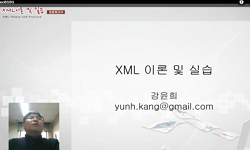This study attempted a detailed analysis of the poem Jeongseokga, for which related data have not survived, based on the literary materials and semantic structure to interpret the meaning context of the poem consistently. The first line of each stanza...
http://chineseinput.net/에서 pinyin(병음)방식으로 중국어를 변환할 수 있습니다.
변환된 중국어를 복사하여 사용하시면 됩니다.
- 中文 을 입력하시려면 zhongwen을 입력하시고 space를누르시면됩니다.
- 北京 을 입력하시려면 beijing을 입력하시고 space를 누르시면 됩니다.
https://www.riss.kr/link?id=A108984932
- 저자
- 발행기관
- 학술지명
- 권호사항
-
발행연도
2024
-
작성언어
-
- 주제어
-
KDC
800
-
등재정보
KCI등재
-
자료형태
학술저널
-
수록면
163-192(30쪽)
- DOI식별코드
- 제공처
-
0
상세조회 -
0
다운로드
부가정보
다국어 초록 (Multilingual Abstract)
The first line of each stanza mentions minerals associated with literary materials such as “stone,” “fine sand,” “jade,” “iron,” “ductile iron,” and “bead.” The “stone” of the title and the “stone” of the first stanza indicate the concave musical instrument(gyungsoi), and accordingly, the materials in the second to fifth stanza are related to the ingredients of the instrument. Therefore, Jeongseokga is thought to refer to the song of a concave musical instrument. On the other hand, the second to sixth stanza mention “chestnut,” “lotus,” “iron clothes of escort warrior,” “bull,” and “bead,” figurative literary materials are related to a banquet as food, a banquet venue with a pond, the clothes of the warrior guarding the banquet hall, and the ornaments of the participants.
The performance can be understood through the relationship between these materials. The speaker, who is a musician playing concave musical instruments, would have taken the materials of the banquet and written the lyrics while performing. Behind the literary materials, characters supporting the banquet such as a craftsman, gardener, warrior, seamstress, chef, and dancer appear, and through warrior clothes and grazing bulls, the special fascination of the banquet is expressed. Poetic thoughts are developed to heighten the atmosphere of entertainment at banquets.
Jeongseokga consists of three sections. In the first stanza, the sense of the presence of the performance is expressed, and the meaning of the performance that praises the era of peace is declared. Poetic thoughts develop from the second to the fifth stanzas with literary materials related to the banquet. In the last line of each stanza, there is praise for and expressions of loyalty to the banquet organizer. In the sixth stanza, the theme of the poem converges with the metaphor of the bead.
Given the literary materials and semantic structure, it can be seen that Jeongseokga is an elegant ode produced by the relationship between the organizer, the king, and the participants in the atmosphere of the banquet.
This study attempted a detailed analysis of the poem Jeongseokga, for which related data have not survived, based on the literary materials and semantic structure to interpret the meaning context of the poem consistently.
The first line of each stanza mentions minerals associated with literary materials such as “stone,” “fine sand,” “jade,” “iron,” “ductile iron,” and “bead.” The “stone” of the title and the “stone” of the first stanza indicate the concave musical instrument(gyungsoi), and accordingly, the materials in the second to fifth stanza are related to the ingredients of the instrument. Therefore, Jeongseokga is thought to refer to the song of a concave musical instrument. On the other hand, the second to sixth stanza mention “chestnut,” “lotus,” “iron clothes of escort warrior,” “bull,” and “bead,” figurative literary materials are related to a banquet as food, a banquet venue with a pond, the clothes of the warrior guarding the banquet hall, and the ornaments of the participants.
The performance can be understood through the relationship between these materials. The speaker, who is a musician playing concave musical instruments, would have taken the materials of the banquet and written the lyrics while performing. Behind the literary materials, characters supporting the banquet such as a craftsman, gardener, warrior, seamstress, chef, and dancer appear, and through warrior clothes and grazing bulls, the special fascination of the banquet is expressed. Poetic thoughts are developed to heighten the atmosphere of entertainment at banquets.
Jeongseokga consists of three sections. In the first stanza, the sense of the presence of the performance is expressed, and the meaning of the performance that praises the era of peace is declared. Poetic thoughts develop from the second to the fifth stanzas with literary materials related to the banquet. In the last line of each stanza, there is praise for and expressions of loyalty to the banquet organizer. In the sixth stanza, the theme of the poem converges with the metaphor of the bead.
Given the literary materials and semantic structure, it can be seen that Jeongseokga is an elegant ode produced by the relationship between the organizer, the king, and the participants in the atmosphere of the banquet.
동일학술지(권/호) 다른 논문
-
- 한국고전문학교육학회
- 송재익 ( Song Jae-ik )
- 2024
- KCI등재
-
현행 교과서를 통해 살펴본 <홍길동전> 교육의 현황과 과제 -중학교 국어 교과서를 중심으로-
- 한국고전문학교육학회
- 정상원 ( Jung Sang-won )
- 2024
- KCI등재
-
인물 전고(典故)를 활용한 판소리계 소설 <토끼전> 교육 연구 -중국인 한국어 학습자를 대상으로-
- 한국고전문학교육학회
- 곽자청 ( Guo Ziqing )
- 2024
- KCI등재
-
현대 대중음악 콘서트에서 전통 굿문화의 발현 양상 -전통과 현대의 관계에 대한 교육적 관점과 관련하여-
- 한국고전문학교육학회
- 신동흔 ( Shin Dong-hun )
- 2024
- KCI등재





 KCI
KCI KISS
KISS



